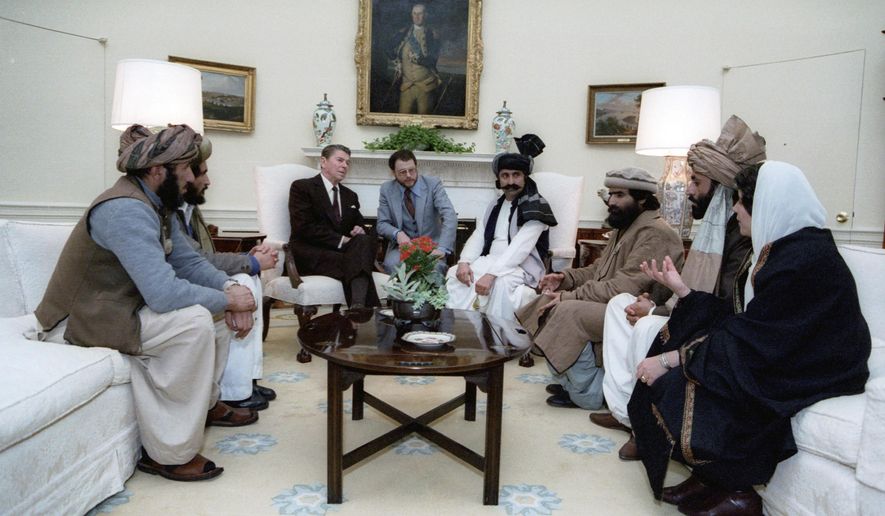This is the second of a three-part podcast series of History As It Happens examining the post-9/11 world for the 20th anniversary of the al Qaeda terrorist attacks. Part one covered the absence of the peace movement during a time of “forever war.”
Thirty-two years after the last Soviet soldiers withdrew from Afghanistan, conceding defeat to the mujahedeen, the U.S. withdrawal from the same country, ending 20 years of war and occupation, has renewed old concerns. Counterterrorism experts are warning Afghanistan will become a cradle for international jihadism, as it did after the Taliban first took control of Kabul in 1996.
If the Taliban victory and survival of al Qaeda in 2021 prove the Global War on Terror has failed — if military force is an ineffective tool for nation-building and eliminating terrorism — it is worth remembering how Afghanistan became a cauldron of jihadism in the first place.
In this episode of History As It Happens, Anatol Lieven, who as a journalist traveled with the mujahedeen during the final years of the war against the Soviet invaders, discusses how foreign policy decisions under Presidents Carter and Reagan continue to haunt the U.S. to this day. In fact, some of the same warlords who benefited from U.S. covert support in the 1980s are still around in Afghanistan.
“I’ve always had a sense that I’ve known the Taliban without ever having traveled with the Taliban,” said Mr. Lieven, who is a senior fellow at the Quincy Institute for Responsible Statecraft.
“But if you look at the map, if you read the news in Kandahar and Helmand where the Taliban were based, clearly these were the sons or, in some cases, grandsons of exactly the same people with whom I traveled in the late 1980s, fighting for very much the same reasons.”
While the mujahedeen and foreign jihadists who traveled to Afghanistan fought to expel the communist infidels from a Muslim land, the Carter and Reagan administrations viewed the conflict through a Cold War lens.
In a covert program started under Carter and then escalated under Reagan, the U.S., working with Saudi Arabia and Pakistan’s military government, sent money and weapons to the Afghan resistance — whom Reagan called freedom fighters — while also recruiting thousands of Muslims from across North Africa, the Middle East, and elsewhere.
The aim was to hobble the Soviet Union in Afghanistan during some of the coldest years of the Cold War, the late 1970s and early 1980s. The unintended consequence was to turn Afghanistan into a magnet for international jihadists.
As Pakistani journalist Ahmed Rashid explained in his 2000 book “Taliban,” about 35,000 Muslim radicals from 43 Islamic countries “would pass their baptism under fire with the Afghan Mujaheddin” between 1982 and 1992. Osama bin Laden, the son of a Saudi billionaire construction magnate, was one of them.
“None of the intelligence agencies involved wanted to consider the consequences of bringing together thousands of Islamic radicals from all over the world,” Mr. Rashid said.
Forty years after the Soviet invasion, and 20 years after bin Laden’s al Qaeda struck the United States, the law of unintended consequences continues to haunt Washington.
For instance, the Haqqani network, a recipient of much U.S. and Saudi aid during the 1980s, is now “at the heart of the Taliban government,” Mr. Lieven said.
“Afghanistan has been a real lesson in prudence. Prudence, that old realist virtue, preached by Edmund Burke and so many others. In other words, your information is always less than you think it is,” he said.
For more of Anatol Lieven’s stories about covering the mujahedeen in the 1980s, as well as his observations about the short-sighted U.S. policies that helped turn Afghanistan into a cradle of anti-American jihadism, listen to this episode of History As It Happens.




